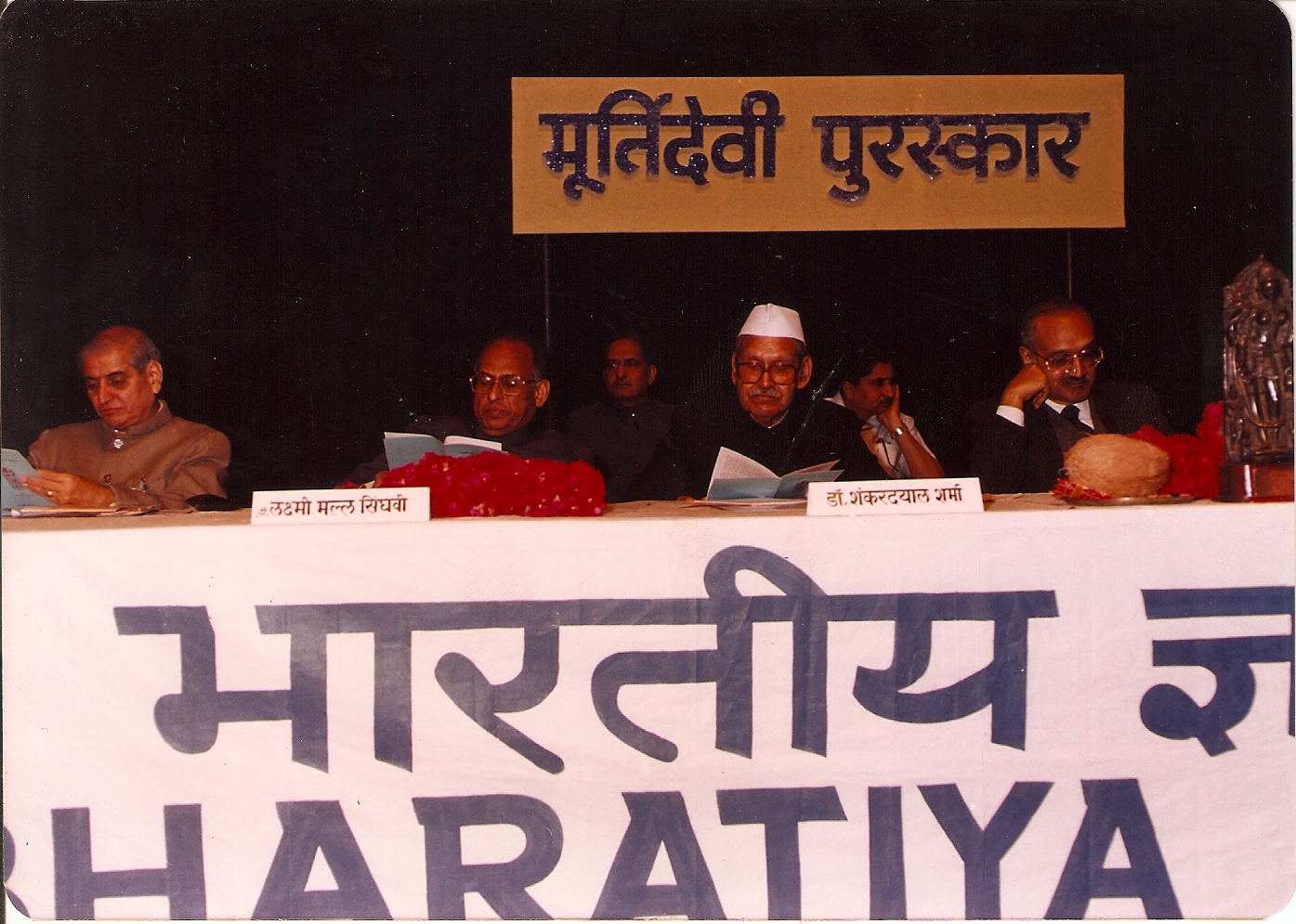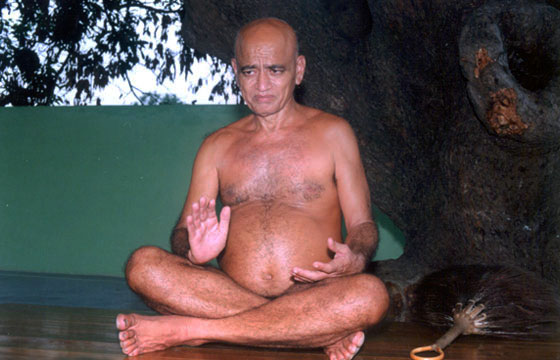|
Gunabhadra (Jain Monk)
Gunabhadra (fl. ninth century CE) was a ''Digambara monk'' in India. He co-authored '' Mahapurana'' along with Jinasena. His lineage started with Chandrasena who initiated Aryanandi. Aryanandi initiated Virasena and Jayasena. Virasena initiated six disciples who were Dasharayguru, Jinasena, Vinayasena, Shripal, Padmasena and Devasena. Dasharayguru and Jinasena initiated Gunabhadra who later initiated Lokasena. Vinayasena initiated Kumarasena who started the Kashtha Sangha Kashtha Sangha (काष्ठा संघ) was a Digambar Jain monastic order once dominant in several regions of North and Western India. It is considered to be a branch of Mula Sangh itself. It is said to have originated from a town named K .... References Citations Sources * External links * Digambara monks Indian Jain writers 4th-century births {{Jainism-stub ... [...More Info...] [...Related Items...] OR: [Wikipedia] [Google] [Baidu] |
Jainism
Jainism ( ), also known as Jain Dharma, is an Indian religions, Indian religion. Jainism traces its spiritual ideas and history through the succession of twenty-four tirthankaras (supreme preachers of ''Dharma''), with the first in the current time cycle being Rishabhadeva, whom the tradition holds to have lived millions of years ago, the twenty-third ''tirthankara'' Parshvanatha, whom historians date to the 9th century BCE, and the twenty-fourth ''tirthankara'' Mahāvīra, Mahavira, around 600 BCE. Jainism is considered to be an eternal ''dharma'' with the ''tirthankaras'' guiding every time cycle of the Jain cosmology, cosmology. The three main pillars of Jainism are ''Ahimsa in Jainism, ahiṃsā'' (non-violence), ''anekāntavāda'' (non-absolutism), and ''aparigraha'' (asceticism). Jain monks, after positioning themselves in the sublime state of soul consciousness, take five main vows: ''ahiṃsā'' (non-violence), ''satya'' (truth), ''Achourya, asteya'' (not stealing), ''b ... [...More Info...] [...Related Items...] OR: [Wikipedia] [Google] [Baidu] |
Digambara
''Digambara'' (; "sky-clad") is one of the two major schools of Jainism, the other being ''Śvētāmbara'' (white-clad). The Sanskrit word ''Digambara'' means "sky-clad", referring to their traditional monastic practice of neither possessing nor wearing any clothes. Digambara and Śvētāmbara traditions have had historical differences ranging from their dress code, their temples and iconography, attitude towards female monastics, their legends, and the texts they consider as important. Digambara monks cherish the virtue of non-attachment and non-possession of any material goods. Monks carry a community-owned ''picchi'', which is a broom made of fallen peacock feathers for removing and thus saving the life of insects in their path or before they sit. The Digambara literature can be traced only to the first millennium, with its oldest surviving sacred text being the mid-second century ''Ṣaṭkhaṅḍāgama'' "Scripture in Six Parts" of Dharasena (the Moodabidri manuscripts) ... [...More Info...] [...Related Items...] OR: [Wikipedia] [Google] [Baidu] |
Jinasena
Jinasena (c. 9th century CE) was a monk and scholar in the ''Digambara'' tradition of Jainism. He was patronized by the Rashtrakuta king Amoghavarsha I. He was the author of ''Adipurana'' and '' Mahapurana''.Early medieval developments (500–1100) Encyclopaedia Britannica Jinasena was the disciple of '' Acharya Virasena'' and he completed the commentary '''' on '''', a revere ... [...More Info...] [...Related Items...] OR: [Wikipedia] [Google] [Baidu] |
Digambara Monk
Digambara Sādhu (also ''muni'', ''sādhu'') is a Sādhu in the Digambar tradition of Jainism, and as such an occupant of the highest limb of the four-fold ''sangha''. They are also called ''Nirgranth'' which means "one without any bonds". Digambar Sādhus have 28 primary attributes which includes observance of the five supreme vows of '' ahimsa'' (non-injury), truth, non-thieving, celibacy and non-possession. A Digambar Sādhu is allowed to keep only a feather whisk, a water gourd and scripture with him. In Jainism, those '' śrāvakas'' (householders) who wish to attain ''moksha'' (liberation) renounce all possessions and become an ascetic. According to the Jain text, ''Dravyasamgraha'': Digambar Sādhus are also called ''nirgranth'' which means "one without any bonds". The term originally applied to those of them who were on the point of attaining to omniscience, on the attainment of which they were called ''munis''. Rishabhanath (the first '' Tirthankar'') is said ... [...More Info...] [...Related Items...] OR: [Wikipedia] [Google] [Baidu] |
India
India, officially the Republic of India (Hindi: ), is a country in South Asia. It is the seventh-largest country by area, the second-most populous country, and the most populous democracy in the world. Bounded by the Indian Ocean on the south, the Arabian Sea on the southwest, and the Bay of Bengal on the southeast, it shares land borders with Pakistan to the west; China, Nepal, and Bhutan to the north; and Bangladesh and Myanmar to the east. In the Indian Ocean, India is in the vicinity of Sri Lanka and the Maldives; its Andaman and Nicobar Islands share a maritime border with Thailand, Myanmar, and Indonesia. Modern humans arrived on the Indian subcontinent from Africa no later than 55,000 years ago., "Y-Chromosome and Mt-DNA data support the colonization of South Asia by modern humans originating in Africa. ... Coalescence dates for most non-European populations average to between 73–55 ka.", "Modern human beings—''Homo sapiens''—originated in Africa. Then, int ... [...More Info...] [...Related Items...] OR: [Wikipedia] [Google] [Baidu] |
Mahapurana (Jainism)
''Mahapurana'' (महापुराण) or ''Trishashthilkshana Mahapurana'' is a major Jain text composed largely by ''Acharya'' Jinasena during the rule of Rashtrakuta ruler Amoghavarsha and completed by his pupil Gunabhadra in the 9th century CE. Mahapurana consists of two parts. The first part is ''Ādi purāṇa'' written by ''Acharya'' Jinasena. The second part is ''Uttarapurana'' which is the section composed by Gunabhadra. Description The ''Trishashthilkshana Mahapurana'' was composed by Jinasena, Gunabhadra and Chavundaraya in 9th century CE. Mahapurana consists of two parts. The first part is ''Ādi purāṇa'' written by ''Acharya'' Jinasena. The second part is ''Uttarpurana'' which is the section composed by Gunabhadra. ''Adipurana'' contains about 37 chapters where as ''Uttarapurana'' contains about 65 chapters. The completed and edited text was released by Lokasena, pupil of Gunabhadra in a celebration at Bankapura in the court of Vira-Bankeyarasa in 898 CE. ... [...More Info...] [...Related Items...] OR: [Wikipedia] [Google] [Baidu] |
Virasena
Acharya Virasena (792-853 CE), also known as Veerasena, was a Digambara monk and belonged to the lineage of Acharya Kundakunda. He was an Indian mathematician and Jain philosopher and scholar. He was also known as a famous orator and an accomplished poet. His most reputed work is the Jain treatise ''Dhavala''. The late Dr. Hiralal Jain places the completion of this treatise in 816 AD. Virasena was a noted mathematician. He gave the derivation of the volume of a frustum by a sort of infinite procedure. He worked with the concept of ''Ardha Chheda'': the number of times a number could be divided by 2; effectively base-2 logarithms. He also worked with logarithms in base 3 (trakacheda) and base 4 (caturthacheda). Virasena gave the approximate formula ''C'' = 3''d'' + (16''d''+16)/113 to relate the circumference of a circle, ''C'', to its diameter, ''d''. For large values of ''d'', this gives the approximation π ≈ 355/113 = 3.14159292.. ... [...More Info...] [...Related Items...] OR: [Wikipedia] [Google] [Baidu] |
Kashtha Sangha
Kashtha Sangha (काष्ठा संघ) was a Digambar Jain monastic order once dominant in several regions of North and Western India. It is considered to be a branch of Mula Sangh itself. It is said to have originated from a town named Kashtha. Origin The origin of Kashtha Sangha is often attributed to Lohacharya in several texts and inscriptions from Delhi region. The Kashtasangh Gurvavali identifies Lohacharya as the last person who knew Acharanga in the Digambara tradition, who lived until the 683rd year of the nirvana of Lord Mahavira. the Darshanasara of Devasena (VS 990) attributes the origin to Kumarasena in Vikram Samvat 753. Acharya Chandrasena initiated Aryanandi. Aryanandi initiated Virasena and Jayasena. Virasena initiated six disciples who were Dasharayguru, Jinasena, Vinayasena, Shripal, Padmasena and Devasena. Dasharayguru and Jinasena initiated Gunabhadra who later initiated Lokasena. Vinayasena initiated Kumarasena who started the Kashtha Sangha. ... [...More Info...] [...Related Items...] OR: [Wikipedia] [Google] [Baidu] |
Bharatiya Jnanapitha
Bharatiya Jnanpith a literary and research organization, based in New Delhi, India, was founded on February 18, 1944Encyclopaedia of Indian literature vol. 1, p. 298 1987, Sahitya Akademi, by Sahu Shanti Prasad Jain of the Sahu Jain family and his wife Rama Jain to undertake systematic research and publication of Sanskrit, Prakrit, Pali and Apabhramsha texts and covering subjects like religion, philosophy, logic, ethics, grammar, astrology, poetics, etc.jnanpith.net , Bhartiya Jnanpith Official website Its research and publication programme started with the publication of the texts. A temple at |
Digambara Monks
Digambara Sādhu (also ''muni'', ''sādhu'') is a Sādhu in the Digambar tradition of Jainism, and as such an occupant of the highest limb of the four-fold ''Sangha (Jainism), sangha''. They are also called ''Nirgranth'' which means "one without any bonds". Digambar Sādhus have 28 primary attributes which includes observance of the five supreme vows of ''Ahimsa in Jainism, ahimsa'' (non-injury), truth, non-thieving, celibacy and non-possession. A Digambar Sādhu is allowed to keep only a feather whisk, a water gourd and scripture with him. In Jainism, those ''Śrāvaka (Jainism), śrāvakas'' (householders) who wish to attain ''Moksha (Jainism), moksha'' (liberation) renounce all possessions and become an ascetic. According to the Jain text, ''Dravyasamgraha'': Digambar Sādhus are also called ''nirgranth'' which means "one without any bonds". The term originally applied to those of them who were on the point of attaining to omniscience, on the attainment of which they we ... [...More Info...] [...Related Items...] OR: [Wikipedia] [Google] [Baidu] |
Indian Jain Writers
Indian or Indians may refer to: Peoples South Asia * Indian people, people of Indian nationality, or people who have an Indian ancestor ** Non-resident Indian, a citizen of India who has temporarily emigrated to another country * South Asian ethnic groups, referring to people of the Indian subcontinent, as well as the greater South Asia region prior to the 1947 partition of India * Anglo-Indians, people with mixed Indian and British ancestry, or people of British descent born or living in the Indian subcontinent * East Indians, a Christian community in India Europe * British Indians, British people of Indian origin The Americas * Indo-Canadians, Canadian people of Indian origin * Indian Americans, American people of Indian origin * Indigenous peoples of the Americas, the pre-Columbian inhabitants of the Americas and their descendants ** Plains Indians, the common name for the Native Americans who lived on the Great Plains of North America ** Native Americans in the Uni ... [...More Info...] [...Related Items...] OR: [Wikipedia] [Google] [Baidu] |



